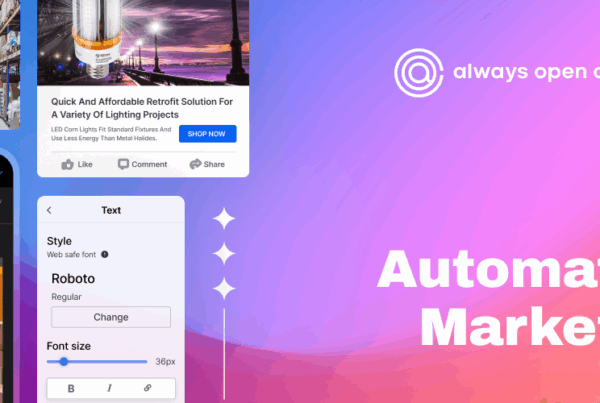PART 2: LEARNING YOUR LOGISTICS
In the previous article, we have discussed the basics of setting up an online business in Australia. We’ve summarized the entire process into 8 distinct steps, providing you a complete initial walkthrough of starting an online store.
Part 2 is all about logistics.
Logistics play a crucial part in any forms of retail. Whether you’re running a brick-and-mortar store or making deals through online channels, logistics is, simply put, the way you will get your products to your customers. It works like a human’s skeleton – serving as the framework of any business and by extension, the backbone of a nation’s economy.
But how does logistics work in an isolated country like Australia? Let’s talk about the dropshipping model.
Understanding dropshipping in Australia
.

Infographic by Oberlo. For in-depth discussion about dropshipping, visit www.oberlo.com/blog/how-to-start-a-dropshipping-business
Dropshipping is a method of retail fulfillment where the supplier—not the retailer—delivers the goods directly to the customer. The retailer doesn’t keep and track inventory; instead, when an online store receives an order, the merchant (or retailer) forwards the request to a dropshipping partner (or supplier).
To further understand the simplicity of the dropshipping business model, here’s a sample process flow for an online store we’ve made up – the Always Open Candies (AOT) store.
| Dropshipping Model | Warehouse Model |
| Customer Sandra places an order of 3 boxes of gummy bears on AOC store. | Customer Sandra places an order of 3 boxes of gummy bears on AOC store. |
| AOC store forwards the order to a third-party drop shipping partner. | AOC store confirms it has stock of the ordered product in its warehouse. |
| Dropshipping partner prepares, packages, and ships the goods using AOC Store branding. | AOC Store prepares, packages, and ships the goods from its own warehouse. |
| Customer Sandra receives the goods at her indicated address. | Customer Sandra receives the goods at her indicated address. |
Looks pretty good? Well, yes and no. Using a dropshipping model has its benefits and drawbacks.
| Benefits | Drawbacks |
| Low startup costs | Challenging to find a trustworthy and reliable dropshipping partner |
| Easy to setup | You don’t have quality control over your products |
| Low operating expenses (overhead) | Lower profit margins |
| Wide selection of products | Inventory issues |
| Can run the business anywhere | Shipping complexities |
Apparently, the dropshipping model is most suitable for startup companies who have limited capital. Because of its flexible nature, dropshipping allows you, the merchant, to sell items on your online store without shelling out money for initial inventory. It also prevents you from overstocking and writing off unsold items (if the goods have an expiry period).
If you’re really into setting up your own online business for the Aussies, you might want to look at this list (just scroll down to see the section “List of the Major Drop Shipping Companies”). It’s a list of the most trusted dropshipping companies based in Australia that focus on e-commerce logistics.
But, what if you HAVE the capital needed to start a medium-scale online business. Would you rather opt for local sourcing, or is it safe to get your products abroad? Let’s talk about that right after the jump.
Local Suppliers vs. International Suppliers

Australia is an exporter country, with $243B exports and $199B imports in 2017.
Part of any retail business’ logistics operations is the sourcing of goods to sell, may it be online or traditional. Say your business is growing, and you have your own warehouse to fill in, where would you source your stock?
The common perspective of both online and traditional merchants on this says that local sourcing is faster and easier to manage, while overseas sourcing is much cheaper if you transact in bulk. These factors may sound self-explanatory, but they can be easily missed if not properly understood.
Low-cost country sourcing (LCCS) is the best logistic option if you want to source your goods from abroad. In LCCS, products or materials originate from countries with cheap labor and manufacturing costs resulting in astoundingly low purchasing prices. LCCS nations are often resource-rich countries with strictly imposed regulated wages such as China, India, and Mexico. Familiar with the quality epidemic “Made in China”? Now you know where that’s coming from.
Local sourcing, on the contrary, requires some considerations. One of the fundamental reasons to source locally is proximity. Purchasers that are based in the same country as the producer has greater control over inventories afforded by frequent quality checks and clear communication. In many circumstances, companies that are based in a country that has a weaker currency relative to the supplier’s country are advised to source their products locally. It’s not only quicker; logistics are less costly when shipping domestically.
Decision Time
Seeing your online business grow is like reaping the fruits of the seeds you sowed. As it continually expands, a business’ logistics requirements become more pressing. Sourcing locally or internationally is never a simple, cut-and-dry decision. You have to identify key factors—what is vital and what can be compromised—before establishing a solid direction.
It is also essential for online businesses to view suppliers as a partner rather than a one-time deal, taking into consideration that some of the world’s biggest retailers became what they are thanks to loyal business “relationships.”
Ultimately, any decisions regarding the ordering of supplies or inventory stock are far more stable and risk-free if precise knowledge of current stock and future needs are laid out and properly reported. This precision requires expert-level intervention—an inventory or product management system with comprehensive capabilities of monitoring and analyzing data.
We will talk about these software systems on our third and last part of this blog series.












